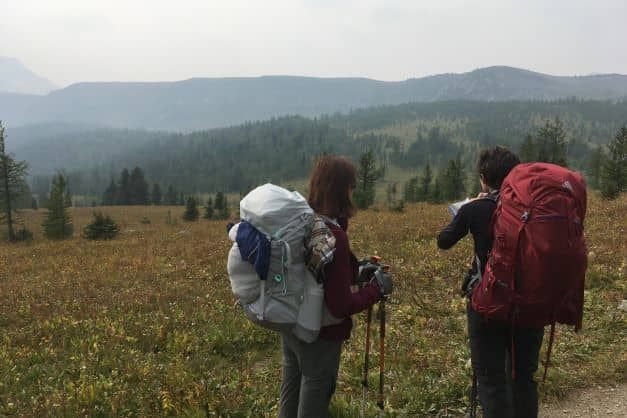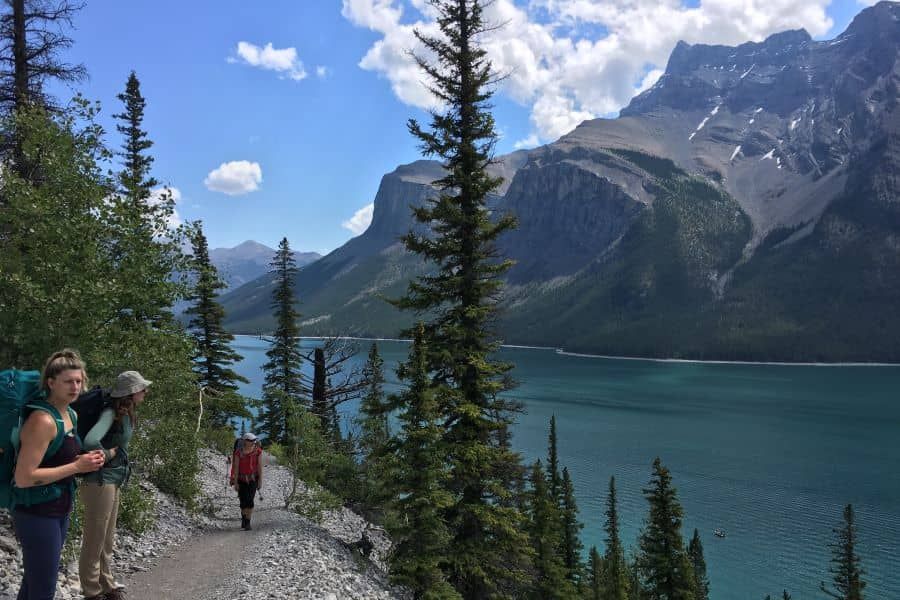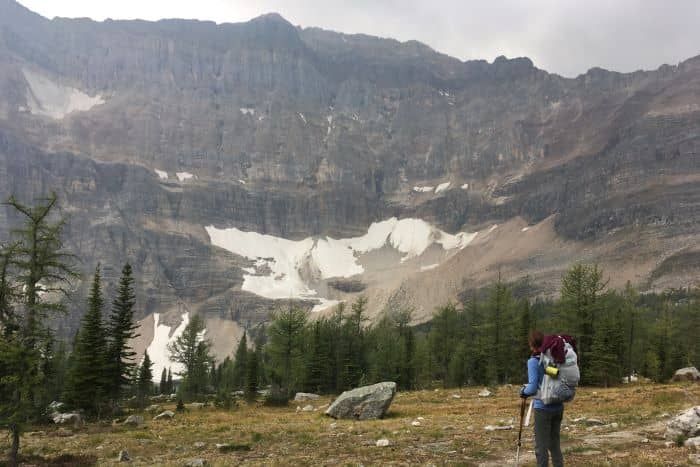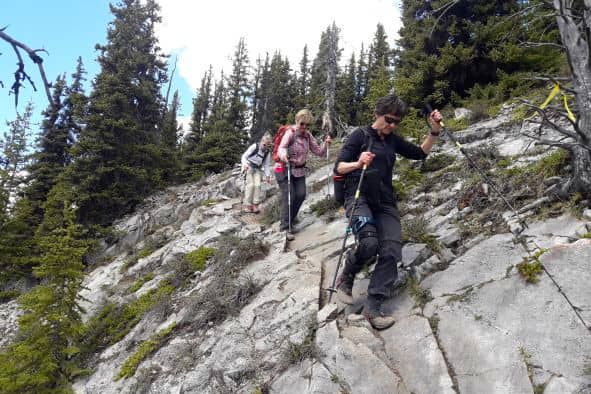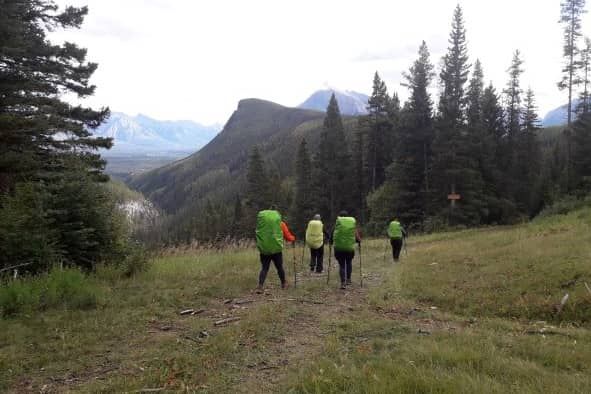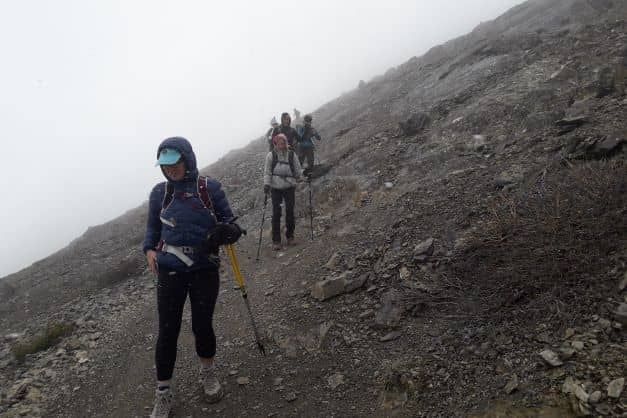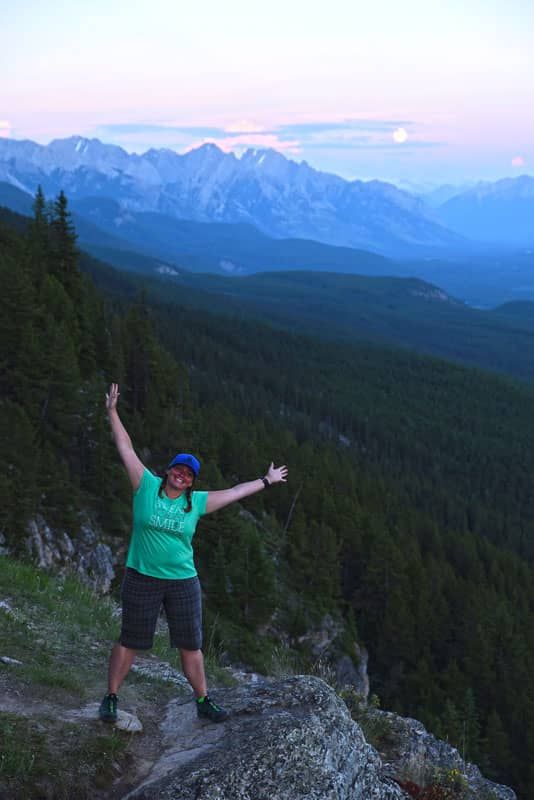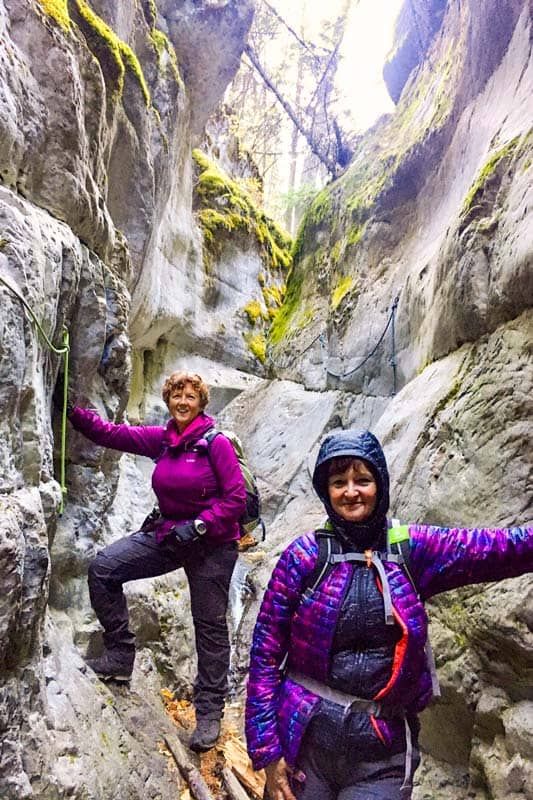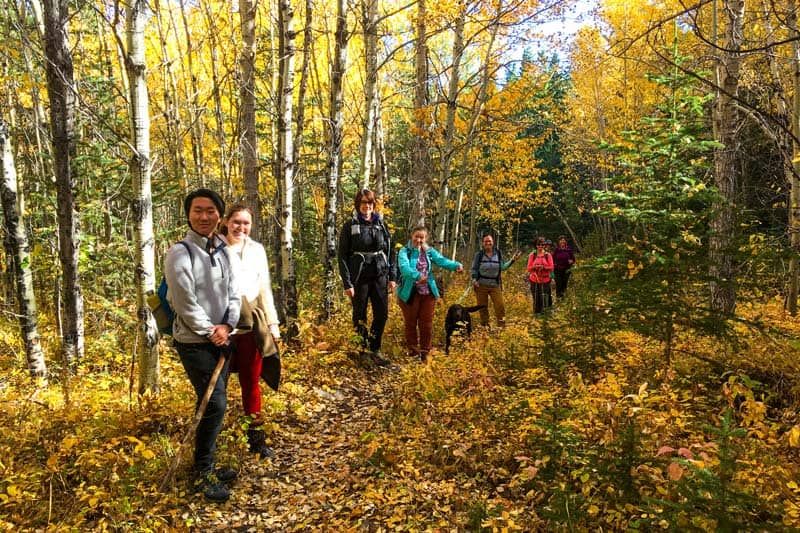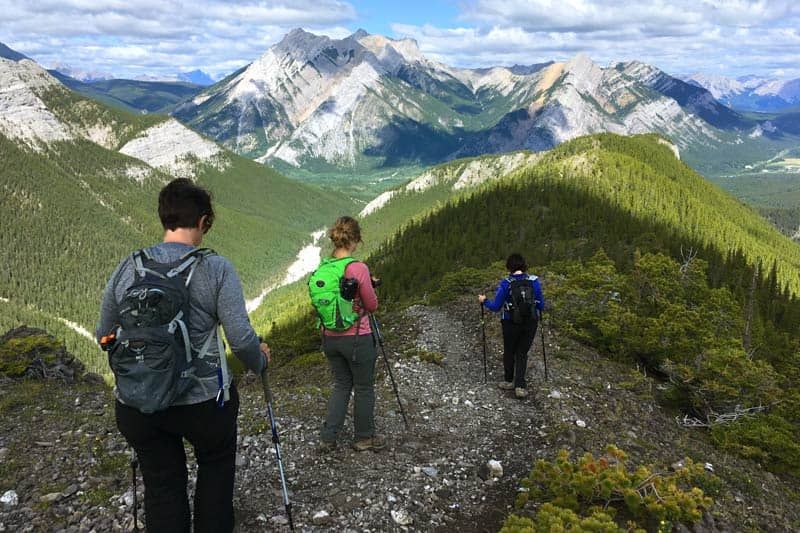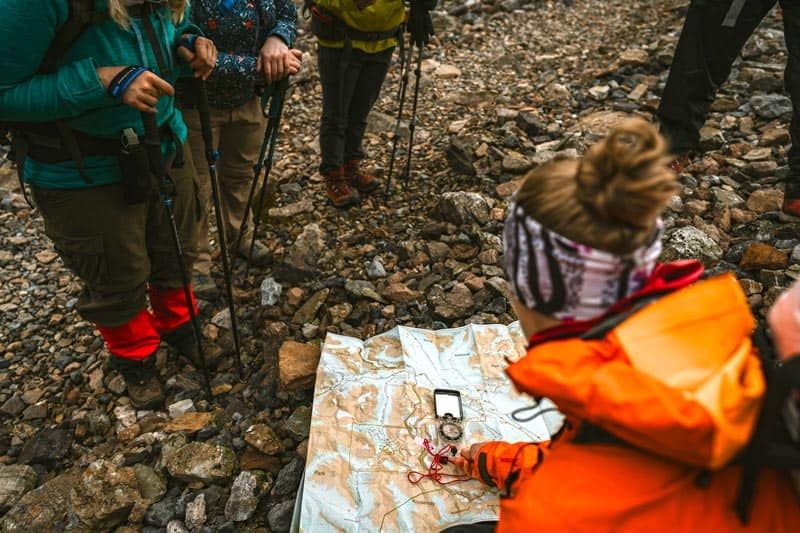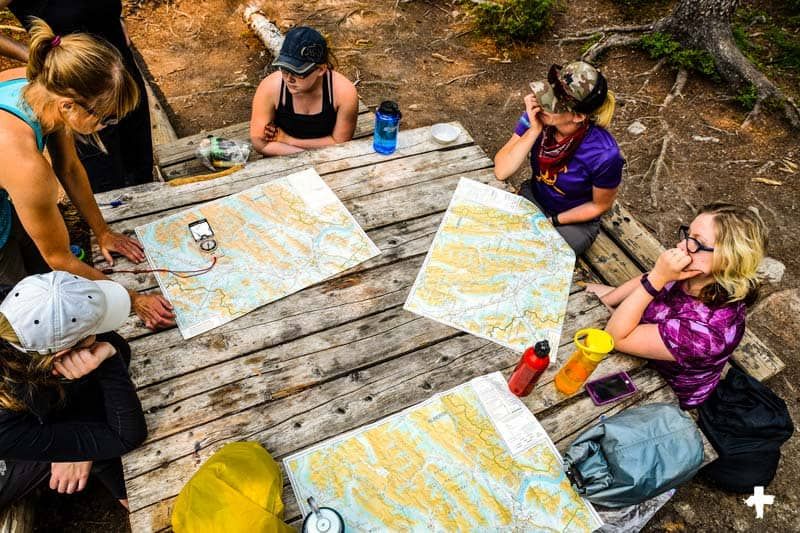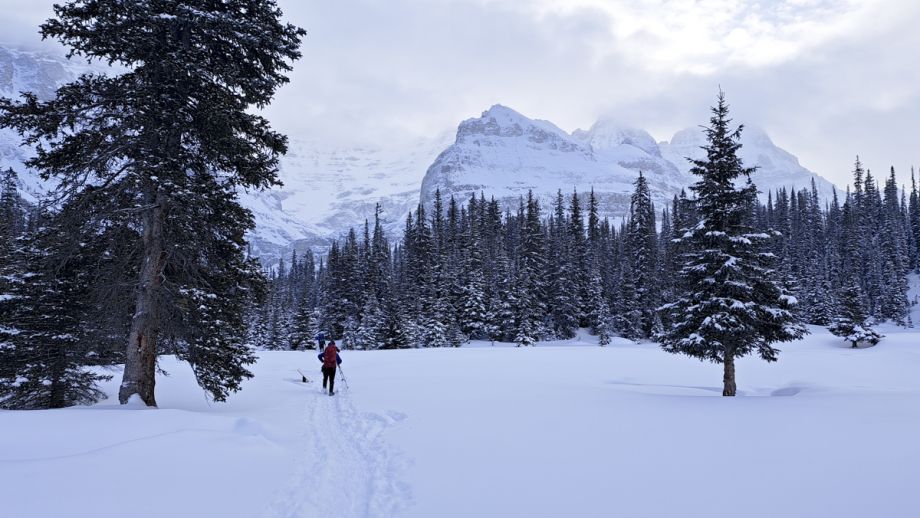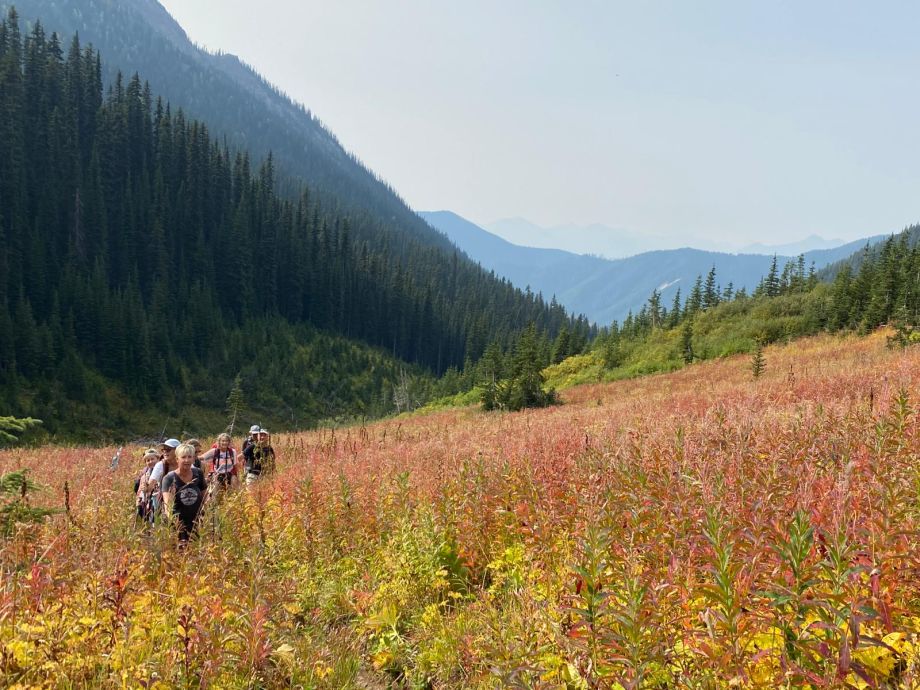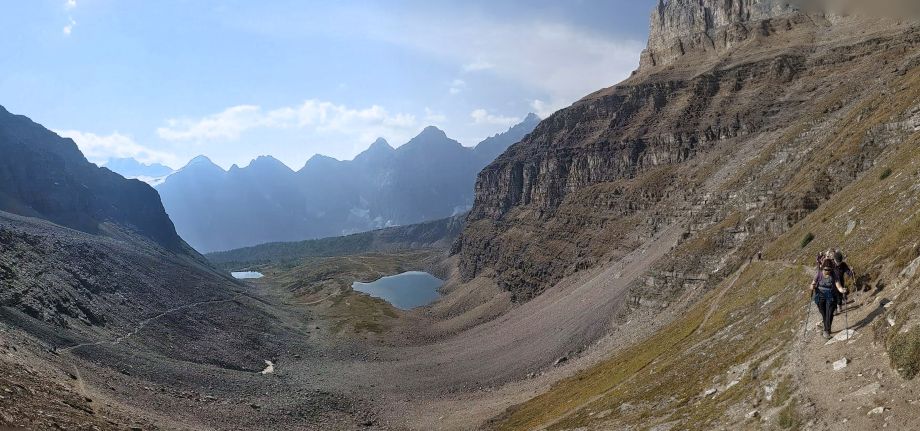Are We There Yet? Planning a Hike
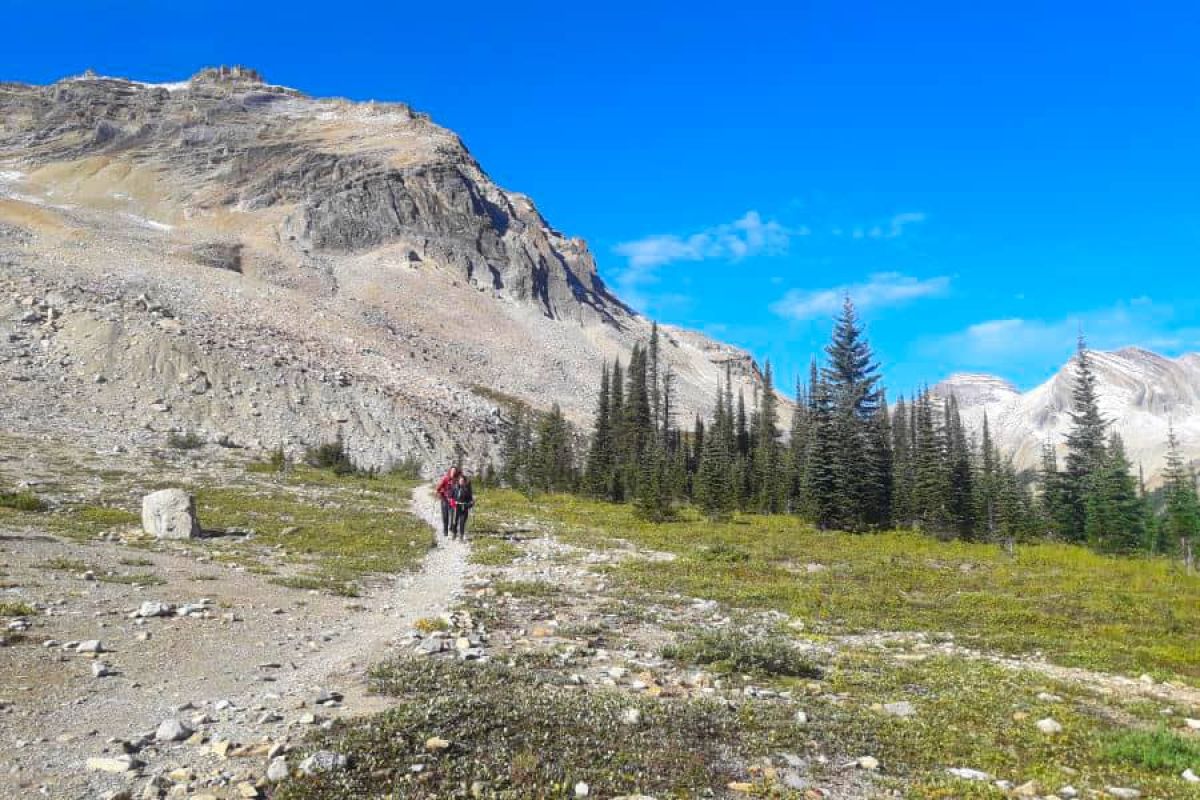
"With every trip you plan, hike, and reflect on, the planning process gets easier, more natural, and more accurate"
Determining how long a hike will take will help you decide if this is the right hike for you. It will also help you plan what time you need to leave the trailhead, how many snacks you’ll need, and if this is appropriate for your 10yo kiddo. When first starting to do these calculations, it’s better to overestimate how long a hike will take. You will become more accurate the more hikes you do.
Naismiths rule is the most common way to estimate hiking times.
In a nutshell, it is this: Hiking Time = (Time for Distance) + (Time for Elevation Gain/Loss)
Time for Distance
Standard hiking speeds are 3-5km/hr
-
Choose a Slower Speed if:
- The trail is rough or poorly maintained
- Backpacks are heavy (overnight trip)
- The group is large (4+)
- The group includes hikers whose objective is to "smell the flowers"
- If you're not use to the high altitude in the Canadian Rockies
-
Choose a Faster Speed if:
- The trail is smooth or well maintained
- Backpacks are light (day trip)
- The group is small (less than 4)
- The group includes hikers whose focus is on the destination
In general, when we are guiding we use 3km/hr for our backpacking trips and 4km/hr for our days trip route plans.
Time for Elevation Gain/Loss
Next, we take elevation into account
-
Elevation Gain
- For every 300m gain add 60min or 1 hour
-
Elevation Loss
- For every 300m loss add 10min or 0.16 hours
Looking at a trail you'll want to take into account all major elevation changes. For example, if the trail to your campground goes through two mountain passes you'll want to include the elevation gain and loss for each pass. This will provide the most accurate estimate.
Add a Buffer
Finally, we need to add time for breaks, and a bit of a buffer or contingency. How big your buffer should be depends on the consequences of being late. If you’re trying to squeeze in a hike prior to picking up your kid from school, a larger buffer might be the best choice. If you are doing a day hike near Banff, Alberta with a good weather forecast and no afternoon commitments, you may not need a buffer at all.
Generally, adding 10min for every hour you're on trail will account for your breaks.
Practice Examples
Let’s explore two examples of different hiking teams, Team Decaf and Team Caffeinated.
Team Decaf
A group of 5 new hikers plan to hike to Three Isle Lake Campground, in Kananaskis (one of the best overnight hikes in Alberta). They’ve been out hiking several times and just took the Women’s Intro to Backpacking course. They are super excited to put their new skills to work, and this is the first time they are doing all the planning and navigating on their own. They want to be sure they get to camp in time to set up camp and have time to relax.
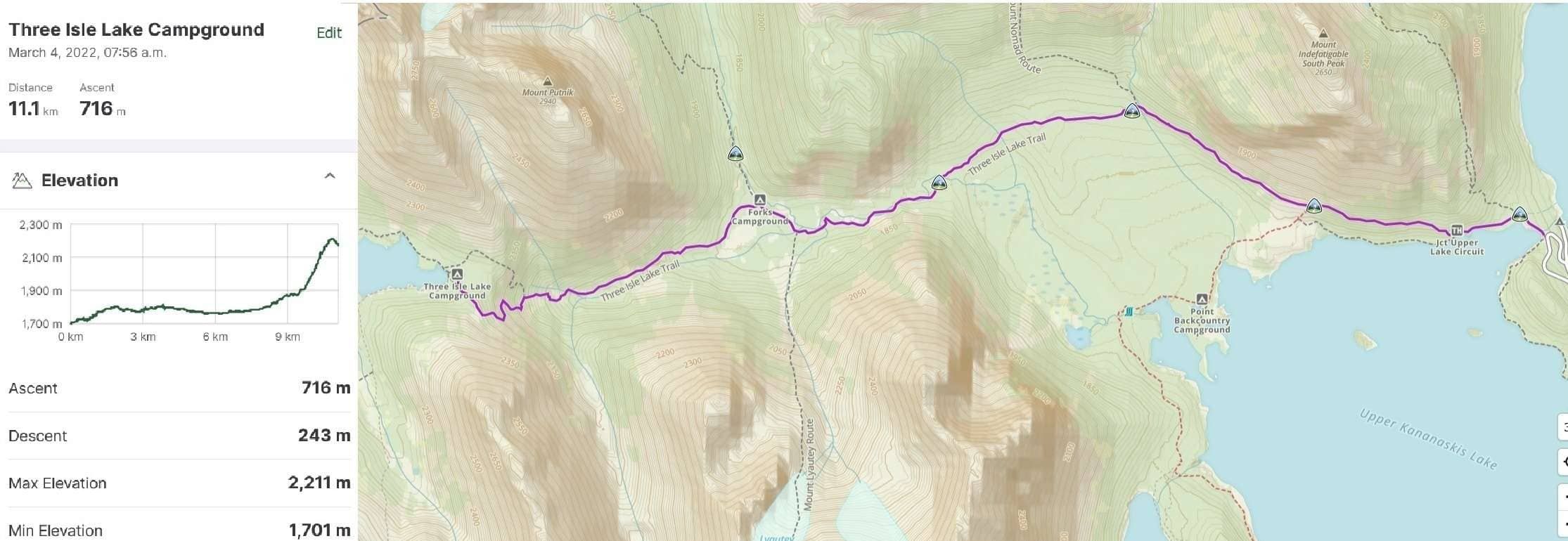
- Choose a Speed
- The team is more than four people, carrying heavy overnight backpacks, and want to enjoy the scenery along the way. A good speed estimate for this team is 3km/hr
- Find the Time for Distance
- The overall hiking distance is 11.1km
- Time = Distance / Speed
- Time = (11.1km) / (3km/hr)
- Time for Distance = 3.7hours
- Find the Time for the Elevation
- The total elevation gain is 716m and the loss is 243m
- Time = Time for Elevation Gain + Time for Elevation Loss
- Time = (716m)(1hour/300m) + (243m)(0.16hr/300m)
- Time = 2.4 hours + 0.13 hours
- Time for Elevation = 2.5 hours
- Pick Times for Breaks and Buffer
- New to backpacking, Team Decaf is unsure how many breaks they will want. A general rule of thumb is to add 10min for every hour they are on the trail. They want to get to camp with lots of time to spare, so they added 1 hour as a buffer, just in case.
- Breaks = 4 x 10min = 40min or 0.6hours
- Buffer = 1 hour
- Putting it All Together
- Hiking Time = Time for Distance + Time for Elevation + Breaks + Buffer
- Hiking Time = 3.7hours + 2.5 hours + 0.6 hours + 1 hour
- Hiking Time = 7.8 hours
If Team Decaf wants to get to camp by 4:30pm, and they will be on the trail for 7.8 hours, they should plan to be leaving the trailhead around 8:45am. If all goes well, they will be a bit early and get extra relaxation time. If they hike slower than planned, or take a wrong turn and have to backtrack a little, they will still arrive in time to set up camp and enjoy the area.
Team Caffeinated
A group of 3 experienced hikers plan to hike Prairie View Trail near Canmore, AB. They hike together quite often, have a pretty good idea of their typical speeds, and are only carrying day packs. They have taken a navigation course, and are confident in using a map and compass. They don’t have to be back by a specific time, and they will be starting fairly early in the morning to be sure they get a good parking spot.
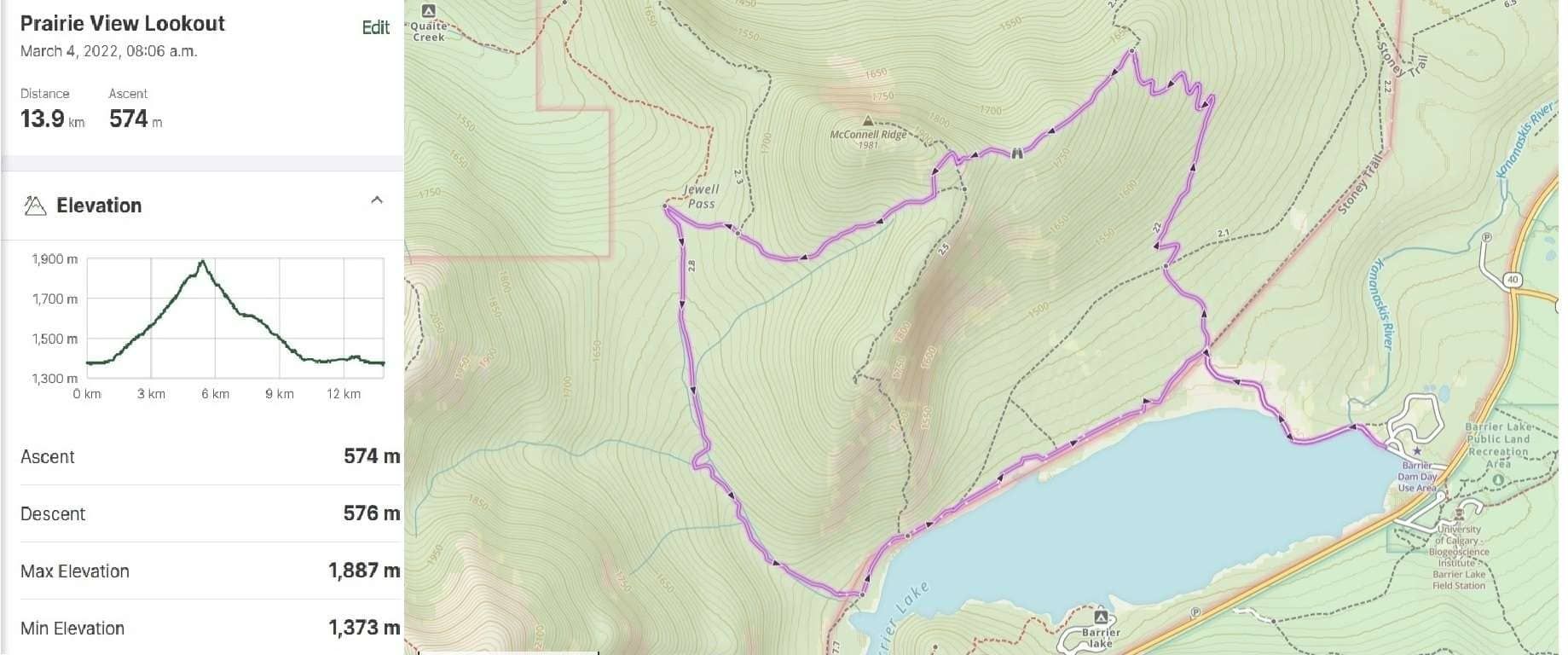
- Choose a Speed
- The team is more less than four people, carrying light day packs, and are focused on the destination. A good speed estimate for this team is 5km/hr
- Find the Time for Distance
- The overall hiking distance is 13.9km
- Time = Distance / Speed
- Time = 13.9km / 5 km/hr
- Time for Distance = 2.8 hours
- Find the Time for Elevation
- The total elevation gain is 574m and the loss is 576m
- Time = Time for Elevation Gain + Time for Elevation Loss
- Time = (574)(1 hour / 300m) + (576m)(0.16 hours / 300m)
- Time = 1.9 hours + 0.3 hours
- Time for Elevation = 2.2 hours
- Pick Times for Breaks and Buffer
- Using the rule of adding 10min for every hour of hiking they've added 3 x 10min. Becuase they are confident in their time estimates and they don't have to be back by a certain time, they are not including a buffer
- Putting it All Together
- Hiking Time = Time for Distance + Time for Elevation + Breaks + Buffer
- Hiking Time = 2.8 hours + 2.2 hours + 0.5 hours + 0 hour
- Hiking Time = 5.5 hours
If Team Caffinated leaves the trail at 8am, they will probably be back to the car around 1:30om.
After the Hike
How did it go? Take time to reflect on how the hike went. This is key to getting better at planning hikes. Ask yourself:
- How close was my time estimate?
- Did I hike faster or slower than I anticipated?
- Was the hike as difficult as expected? What made it harder? Easier?
- Did any particular feature take more/less time or effort than I planned for?
- Did I bring enough water and snacks?
- How long did we actually spend on breaks?
- What needs to be adjusted with my time estimate for next time?
Safety Tip: Share your trip plan and expected return time with a trusted person, and check in with them when you return.
Use the answers from these questions to help you choose and plan your next hike better. Try keeping a log. After several plans, you will learn what speeds to choose, what length of breaks you prefer, and what size of buffer you are comfortable with.
With every trip you plan, hike, and reflect on, the planning process gets easier, more natural, and more accurate. Soon you will be planning like a pro!
If you’d like more instruction on how to predict how long a hike will take you sign up for our navigation course. We spend the day practicing this in the field.
Other Posts of Interest
Fresh off the Press
Most Popular Stories
Tags
Spread the Love - Share this article on your socials...
